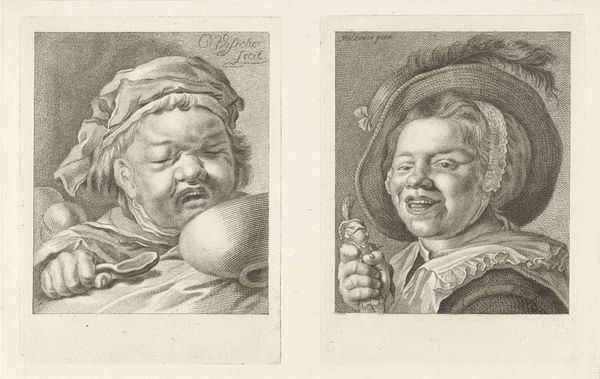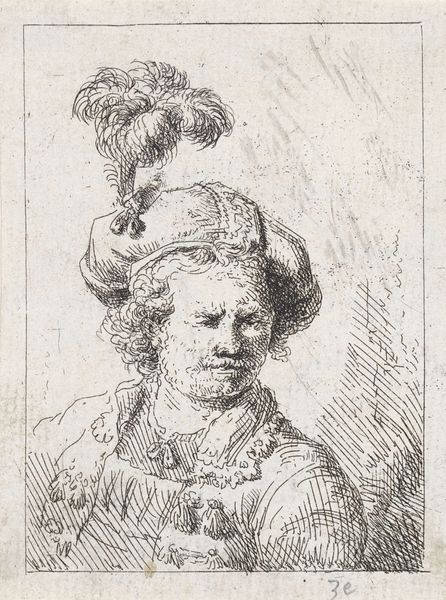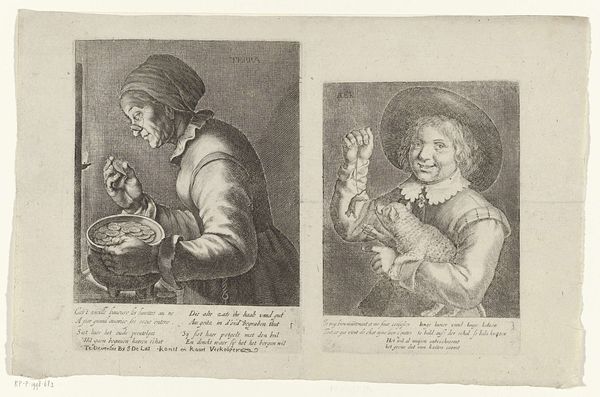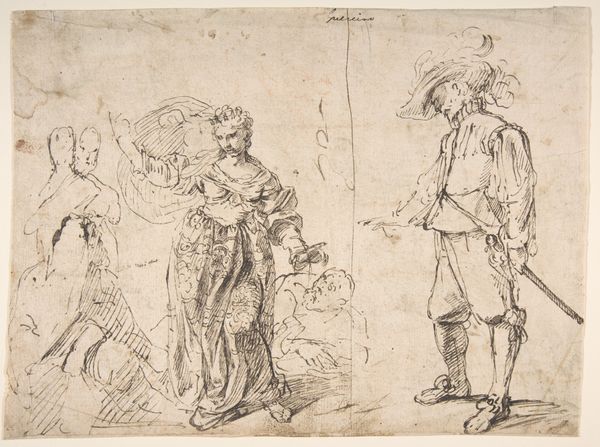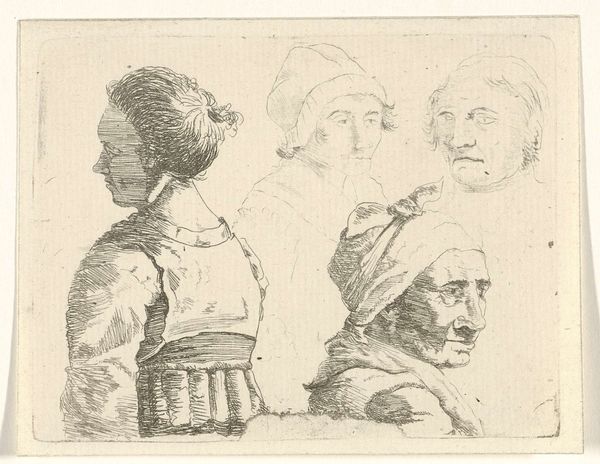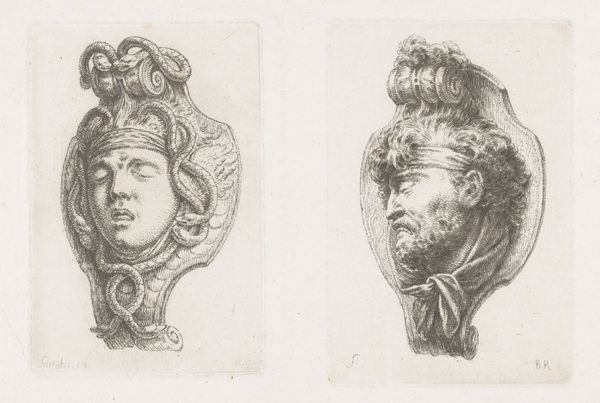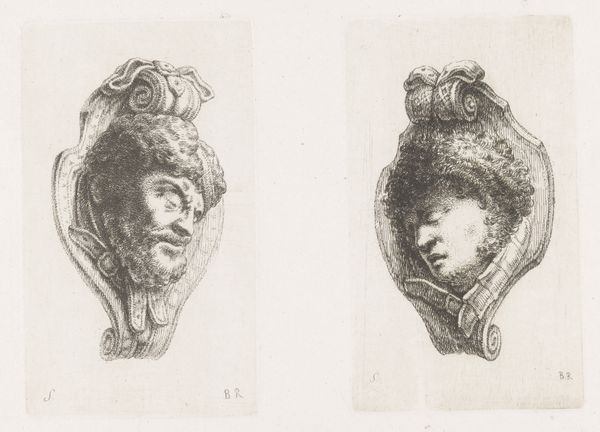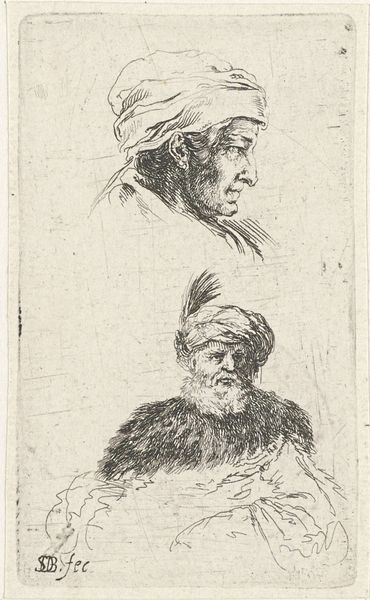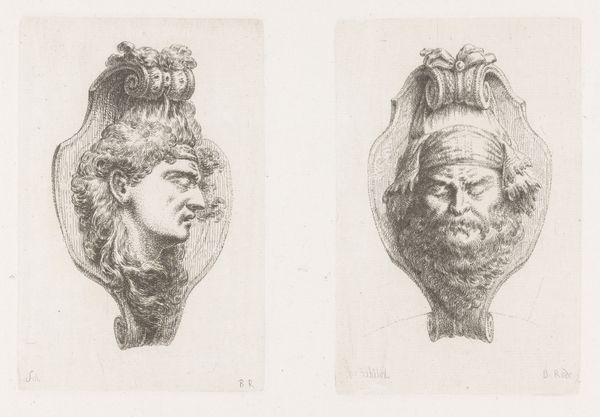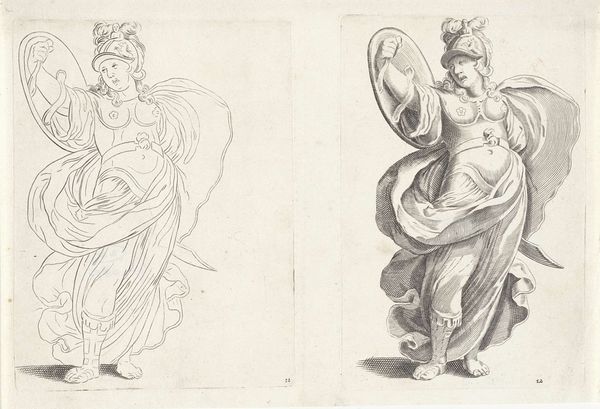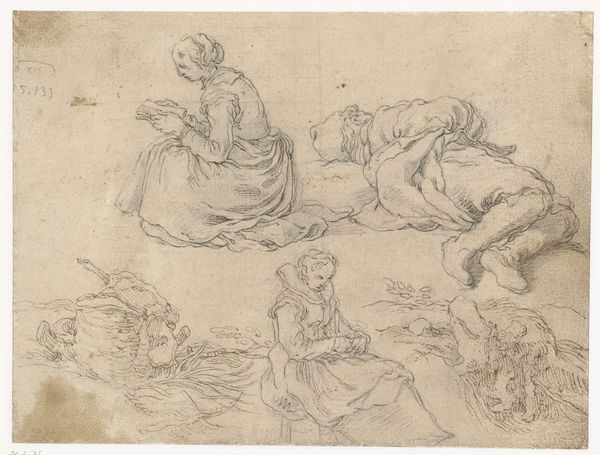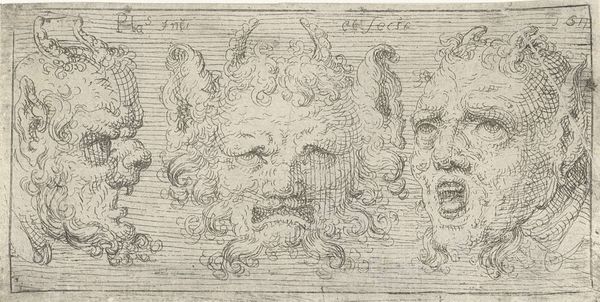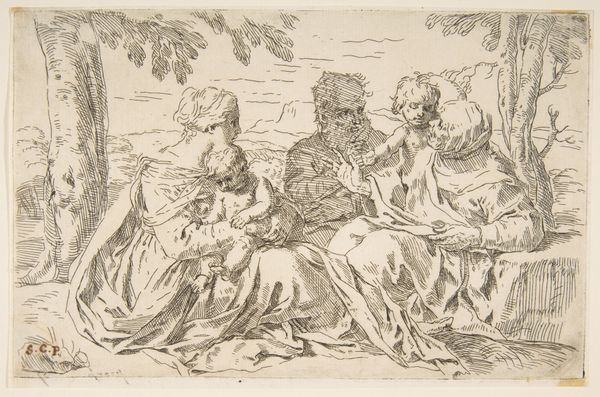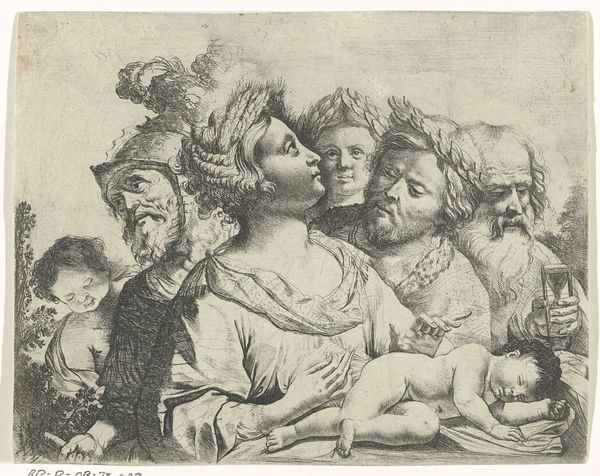
drawing, ink, pen
#
portrait
#
drawing
#
pen sketch
#
pencil sketch
#
figuration
#
ink
#
romanticism
#
pen
Dimensions: height 106 mm, width 158 mm
Copyright: Rijks Museum: Open Domain
Editor: Here we have Abraham van Strij's "Twee mannenbustes," created sometime between 1763 and 1826, using pen and ink. I’m struck by the contrast in their expressions and the almost theatrical costuming. What layers of meaning do you see in this work? Curator: This drawing invites us to consider the performance of masculinity and the visual language of power in the late 18th and early 19th centuries. The figures are adorned in elaborate headwear and attire, hinting at status and perhaps even caricature. What could such costumes reveal about social and gender expectations of the time? Editor: I guess their clothes and the way they present themselves speak to a certain social status… But is van Strij glorifying or critiquing that status? Curator: Exactly the right question to ask! The Romantic period witnessed both a fascination with and a questioning of established norms. Notice the precision of line versus the ambiguity of expression; do you think this contrast contributes to a reading of irony or perhaps even subversion? The rapid strokes could even hint to a desire to question rigid hierarchies and fixed identities, perhaps even advocating for the acceptance of multiple points of views of an event. Editor: That’s fascinating, I hadn’t considered the contrast between precision and ambiguity in that light. Curator: Art gives us a lens. This seemingly simple drawing offers a powerful commentary on how individuals perform roles within societal frameworks and also gives clues to resistance movements. Editor: I'll definitely be considering that in other artworks, thanks for pointing that out!
Comments
No comments
Be the first to comment and join the conversation on the ultimate creative platform.
